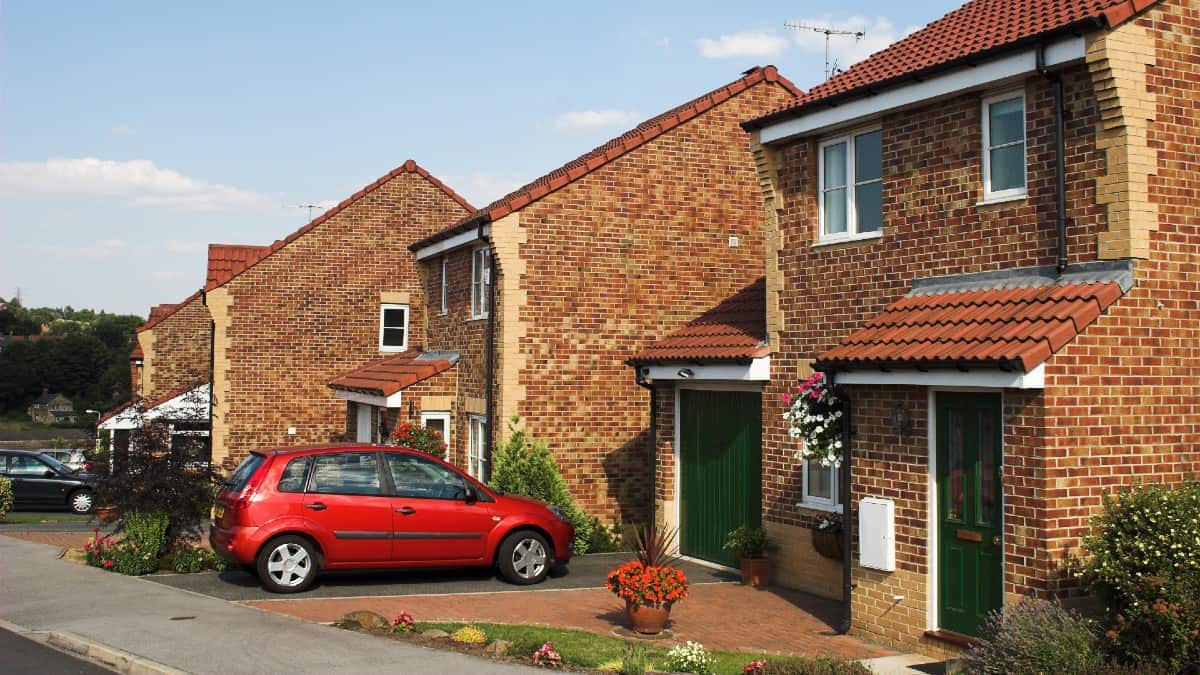Accused of profiteering during the boom of the past decade, homebuilders are now under the cosh for much the same reason even as prices come off the boil.
Skyrocketing mortgage rates have crushed affordability for home purchasers and sent what had been robust house price growth into reverse.
In August, house prices fell at the fastest rate for 14 years, according to Halifax.
Industry insiders also point to the end of the government’s Help to Buy scheme for first-time buyers and the dropping of its 300,000 new homes a year target as throwing even more grit into the gears of the sector.
And of course inflation has run rampant.
Higher costs crimp margins from the other end. Homebuilders have had to pay up for scarce post-pandemic labour and building materials.
The result of these factors has been a spate of profit warnings – though the clever market long ago anticipated that and marked down the shares in advance.
Riders on the storm
The good news for anyone who bought homebuilders when they looked cheap a year ago is that the shares have mostly held steady in 2023.
As I wrote at the end of 2022 when trouble was obviously brewing for the sector:
“…the homebuilders’ finances look pretty strong, with net cash in many cases.
Builders will certainly be hit by a protracted slowdown. They’ve already suffered from inflated input costs, and selling homes for less will further squeeze margins.
Declining sales will pressure the bottom line, while book values could be impaired as land banks are written down.
Yet house builders’ shares have already declined sharply in anticipation of all that. Remember the market always looks forward!
If you think the slowdown will be limited to a year or two, certain builders might even be a buy.”
Homebuilder shares had declined inexorably during 2022, as it became clear that rates would go higher and stay there for longer than anyone had expected.
However, since then the market seems to have recognised the financial discipline that guides the builders these days.
Investors can see the listed builders have both the leadership and the financial wherewithal to ride out at least a moderate storm.
That’s in sharp contrast to the crisis years of 2007 to 2010, when mountains of debt and the threat of going bust loomed large.
Down market
The trouble is that one of the levers the firms have pulled to batten down the hatches is to build fewer new homes.
And this – predictably enough – has stoked ire among the pundit classes
According to figures from RBC Capital Markets as quoted by the Evening Standard earlier this month, the builders will deliver 18,485 fewer homes this year.
Now, as investors we can see why they’d choose to cut production targets in the current climate.
If there’s less demand for a product and at the same time it’s more expensive to make it, why not ease up until better conditions return?
That’s Capitalism 101, at least for a commodity market like homebuilding.
On the other hand, home ownership and affordability is a hot potato in the UK.
Returning to that reduction in housing completions cited by RBC, it equates to a whopping 27% decline in total annual output.
In a country where millions of first-time buyers are paying over a third of their take-home pay on rent – more than 50% in London, according to some estimates – delivering fewer homes is a bad look even at the best of times.
Yet these are far from the best of times. Rents rose over the past year at the fastest pace since ONS records began in 2006!
And rightly or wrongly, a majority of people aspire to own their own homes.
Thus the idea that the makers of those potential homes are going to squat on their land bank until prices go back up is hard to stomach.
Some even accuse the homebuilders of constraining supply in order to keep prices firm and hasten a return of house price growth.
Don’t bank on it
While I have sympathy for those who find house prices ridiculously out of reach, I don’t blame the homebuilders for their plight.
To me it’s mostly about interest rates and the willingness of banks to lend, as well as the tax treatment of property investors and maybe rapid demographic change.
I don’t think builders could stand in the way of these forces even if they wanted to.
There are around 500,000 to 700,000 housing plots in property developers’ land banks, depending on which estimate you believe.
That sounds a lot – and it is, I suppose – but compare it with the 26.4 million dwellings already existing in the UK and it doesn’t seem so big.
True, we all know supply and demand works at the margin to affect prices.
So yes, if somehow the builders could release 500,000 homes onto the market next year, then prices would probably plummet.
But perhaps only half of the land bank actually has planning permission – with a good chunk of the remaining plots basically on the books in the hope that local authorities will make a strategic shift that could unlock them.
Moreover, homebuilders can’t go from boom to bust without having a pipeline of plots in reserve to smooth operations and earnings. Nobody would invest in them!
Finally – and to state the obvious – they aren’t just knocking up loft extensions.
The big listed builders must work with public agencies to ensure that other critical infrastructure will be ready for new homes, for example.
Even in the best circumstances it takes years to move plots through planning. Throw in a few NIMBYs and you could be looking at five to ten years.
Those same authorities also look for a smooth delivery of homes over time, again for obvious reasons given the knock-on for schools, hospitals, and the local branch of Costa. The government’s National Planning Policy Framework even requires them to identify and maintain multi-year pipelines of deliverable land.
And all this is not to touch upon the acute skills shortages in the building sector.
In short, homebuilders couldn’t start to lay foundations across their entire land banks tomorrow even if they wanted to.
Together but estranged
The close relationship between local government and the planning pipeline brings into focus what’s for me a thornier issue with home building in the UK.
Because the fact is that homebuilding – and of course house prices – are hugely important to voters, and thus to politicians.
Many people say we need to build more houses. But few voters want their own homes decline in value – let alone to wake to find a massive new town being developed on the green patch nearby where they walk their dog every Sunday.
Maybe that’s one reason why the state – in this case local authorities – hasn’t been into volume homebuilding since they threw up the last of the big council projects in the 1970s.
Instead, government tries to influence the sector via eye-catching packages like its Help To Buy schemes and other measures that stoked demand.
Critics long ago pointed out these probably do more to plump up the price of new homes than they do to promote more homebuilding.
And even as they’ve benefited from these government schemes, homebuilders typically paid out big dividends – some £16bn over the past 18 years, according to recent number-crunching by academics at Sheffield Hallam University.
Shaky foundations
You don’t need to be Karl Marx to wonder whether government would have been better off focusing its efforts towards directly building more affordable Local Authority homes, if it really wanted to help homebuyers on moderate incomes.
Yet a cynic might note this would put politicians under the same scrutiny that the homebuilders face when they break ground on new estates, among many other issues.
Which is perhaps how we’ve ended up with a situation where homebuilders are impugned for being far better run than they were 15 years ago – and where good cash management and shareholder-friendly dividend policies are put under the microscope by academic researchers.
Not that any of this would stop me investing in homebuilders, at the right price.
But if you don’t like your companies to be kicked around as a political football now and then, you’d better look elsewhere!








